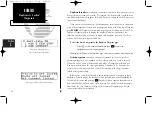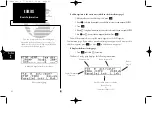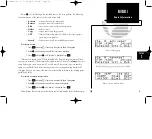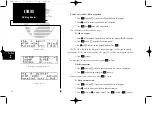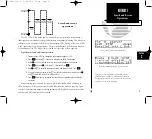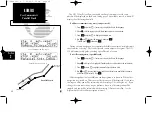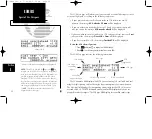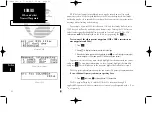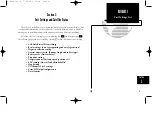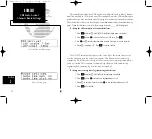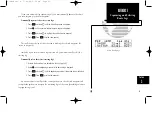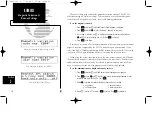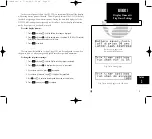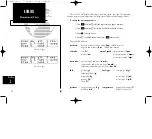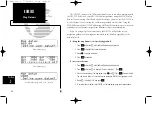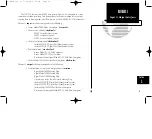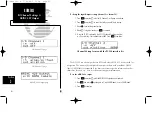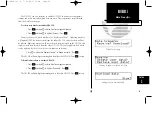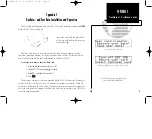
All SUA alerts (except for prohibited areas) may be turned on or off to avoid
unnecessary alerts. Alerts for prohibited areas will always be displayed. An altitude
buffer also may be set to extend the vertical profile of your aircraft to provide earlier
warnings when climbing or descending.
For example, if you are 1500 feet above an SUA, and the altitude buffer is set to
1000 feet, you will not be notified with an alert message. Turning the SUA alerts on
and off and setting the altitude buffer is covered in Section 5, page 59. The SUA
information
will
still be displayed on the SUA Alert page using the
T
key.
To view any of the other nearest waypoints (VORs, NDBs, intersections,
user waypoints and FSSs):
1. Press
T
.
2. Rotate
O
to display the nearest waypoint of each type.
3. When the desired waypoint type is displayed, rotate
K
to scroll through the next eight
nearest waypoints of the same type (FSSs will have only two entries).
To perform a direct-to at any time, simply highlight the identifier with the cursor
and press
D
. To view more information on the waypoint, highlight the identifier
and press
E
. This will take you to the waypoint pages as described in Section 3.
The FSS page displays information on the two nearest FSS points of communication.
To view additional frequency information regarding FSSs:
1. Press
C
, and rotate
K
to view additional FSS frequencies.
The FSS page will display ‘rf’ and the VOR the FSS transmits through, if
applicable.Frequencies which are transmit or receive only are designated with a ‘tx’ or
‘rx’, respectively.
52
REFERENCE
SUAs and other
Nearest Waypoints
Section
4
Nearest VOR
Nearest FSS
Nearest intersections
150man rev E 7/24/98 3:10 PM Page 52



